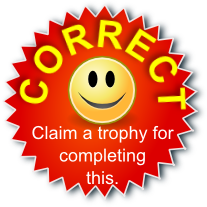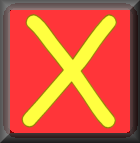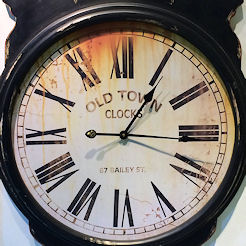Menu Level 1 Level 2 Level 3 Level 4 Level 5 Help Roman Numerals Quiz


Drag the jigsaw pieces onto the frame so that the Roman numerals are in order from smallest to largest.



Drag the jigsaw pieces onto the frame so that the Roman numerals are in order from smallest to largest.

Close

Level 1 - 6 by 5 grid starting at 1
Level 2 - 6 by 6 grid starting at a number between 3 and 9
Level 3 - 7 by 7 grid starting at a number between 33 and 49
Level 4 - 8 by 7 grid starting at a number between 70 and 88
Level 5 - 8 by 8 grid starting at a number between 450 and 470
Roman Numerals Starter - This lesson Starter contains an explanation of Roman numerals.
Roman Numerals Quiz - Ten levels in increasing order of difficulty with an aide memoire.
Answers to this exercise are available lower down this page when you are logged in to your Transum account. If you don’t yet have a Transum subscription one can be very quickly set up if you are a teacher, tutor or parent.

If you enjoyed these jigsaws you may also enjoy the Chinese Numbers Jigsaw.
If you are not yet an expert on Roman numerals here is an explanation:
| Symbol | Value |
| I | 1 |
| V | 5 |
| X | 10 |
| L | 50 |
| C | 100 |
| D | 500 |
| M | 1,000 |
Numbers are formed by combining symbols together. So II is two ones, i.e. 2, and XIII is a ten and three ones, i.e. 13. There is no zero in this system, so 207, for example, is CCVII, using the symbols for two hundreds, a five and two ones. 1066 is MLXVI, one thousand, fifty and ten, a five and a one.
Symbols are placed from left to right in order of value, starting with the largest. However, in a few specific cases, to avoid four characters being repeated in succession (such as IIII or XXXX) these can be reduced using subtractive notation as follows:
The numeral I can be placed before V and X to make 4 units (IV) and 9 units (IX) respectively
X can be placed before L and C to make 40 (XL) and 90 (XC) respectively
C can be placed before D and M to make 400 and 900 according to the same pattern
Don't wait until you have finished the exercise before you click on the 'Check' button. Click it often as you work through the questions to see if you are answering them correctly. You can double-click the 'Check' button to make it float at the bottom of your screen.
Answers to this exercise are available lower down this page when you are logged in to your Transum account. If you don’t yet have a Transum subscription one can be very quickly set up if you are a teacher, tutor or parent.
Close

|
|
||
Transum.orgThis web site contains over a thousand free mathematical activities for teachers and pupils. Click here to go to the main page which links to all of the resources available. Please contact me if you have any suggestions or questions.
|
More Activities: |
|
|
Mathematicians are not the people who find Maths easy; they are the people who enjoy how mystifying, puzzling and hard it is. Are you a mathematician? Comment recorded on the 6 May 'Starter of the Day' page by Natalie, London: "I am thankful for providing such wonderful starters. They are of immence help and the students enjoy them very much. These starters have saved my time and have made my lessons enjoyable." Comment recorded on the 28 May 'Starter of the Day' page by L Smith, Colwyn Bay: "An absolutely brilliant resource. Only recently been discovered but is used daily with all my classes. It is particularly useful when things can be saved for further use. Thank you!" |
Each month a newsletter is published containing details of the new additions to the Transum website and a new puzzle of the month. The newsletter is then duplicated as a podcast which is available on the major delivery networks. You can listen to the podcast while you are commuting, exercising or relaxing. Transum breaking news is available on Twitter @Transum and if that's not enough there is also a Transum Facebook page. |
|
Numeracy"Numeracy is a proficiency which is developed mainly in Mathematics but also in other subjects. It is more than an ability to do basic arithmetic. It involves developing confidence and competence with numbers and measures. It requires understanding of the number system, a repertoire of mathematical techniques, and an inclination and ability to solve quantitative or spatial problems in a range of contexts. Numeracy also demands understanding of the ways in which data are gathered by counting and measuring, and presented in graphs, diagrams, charts and tables." Secondary National Strategy, Mathematics at key stage 3 |
||
Go MathsLearning and understanding Mathematics, at every level, requires learner engagement. Mathematics is not a spectator sport. Sometimes traditional teaching fails to actively involve students. One way to address the problem is through the use of interactive activities and this web site provides many of those. The Go Maths main page links to more activities designed for students in upper Secondary/High school. | ||
Teachers | ||
|
If you found this activity useful don't forget to record it in your scheme of work or learning management system. The short URL, ready to be copied and pasted, is as follows: |
Alternatively, if you use Google Classroom, all you have to do is click on the green icon below in order to add this activity to one of your classes. |
It may be worth remembering that if Transum.org should go offline for whatever reason, there are mirror site at Transum.info that contains most of the resources that are available here on Transum.org. When planning to use technology in your lesson always have a plan B! |
|
Do you have any comments? It is always useful to receive feedback and helps make this free resource even more useful for those learning Mathematics anywhere in the world. Click here to enter your comments. |
||
National Curriculum Document,
Sunday, September 1, 2013
"Learning Roman numerals is in the National curriculum in England for Key Stage 2.
Year 3: Tell and write the time.... using Roman numerals from I to XII
Year 4: Read Roman numerals to 100 (I to C) and know that, over time, the numeral system changed to include the concept of zero and place value
Year 5: Read Roman numerals to 1000 (M) and recognise years written in Roman numerals.
Roman numerals should be put in their historical context so pupils understand that there have been different ways to write whole numbers and that the important concepts of zero and place value were introduced over a period of time."